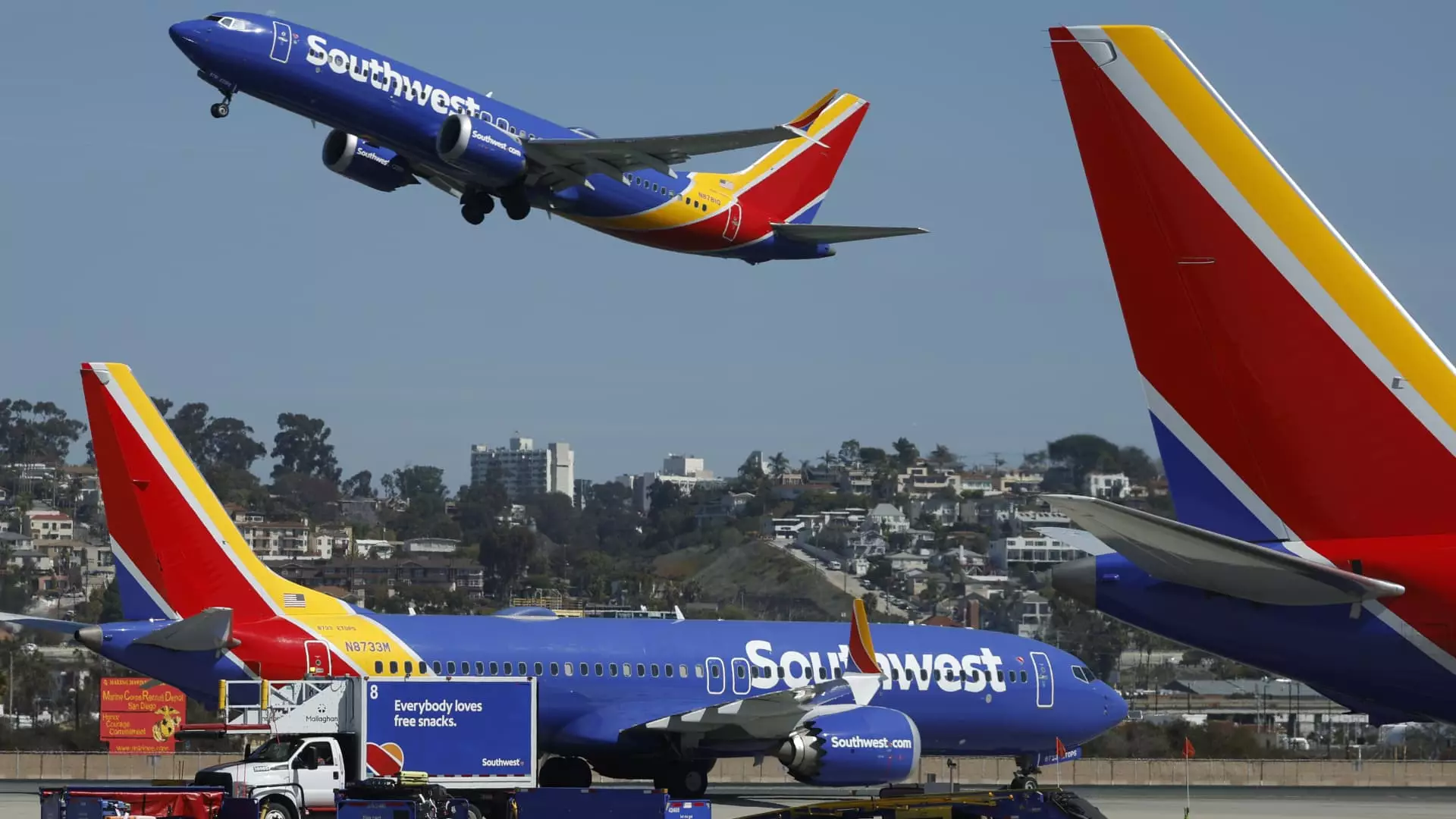In an epoch of unrelenting change within the airline industry, Southwest Airlines is boldly stepping up to revamp its business model, as articulated by CEO Bob Jordan. With a focus on attracting high-spending customers and diversifying their offerings, the airline is open to a shift that resonates far beyond the traditional low-cost model that has defined it for over five decades. This transition is not merely a strategic pivot; it represents a radical reimagining of what it means to fly “Southwest style.”
The Pressure of Competition
Competitors like Delta, American, and United are steadily encroaching on Southwest’s market share by providing luxurious offerings, from premium lounges to spacious seating. With an activist investor in tow, pushing for revenue expansion amidst plummeting airfare, the stakes have never been higher for Southwest. Jordan acknowledges this shift, revealing the necessity for the airline to adopt features typically associated with more costly carriers, from airport lounges to long-haul international flights. Indeed, the apace integration of these amenities is about more than just customer satisfaction; it’s about survival in an increasingly competitive landscape.
The New Age of Customer Expectations
As travel dynamics respond to a post-pandemic reality, customer expectations have evolved significantly. The once-sacrosanct policies that distinguished Southwest, such as free checked bags and open seating, now serve as reminders of a bygone era. Jordan himself hinted at this evolution, revealing a willingness to explore offerings that even the most loyal Southwest customers might desire—luxury and premium services. Nashville International Airport, a key stronghold, has shown heightened demand for these enhancements, indicating that customers are not just content with the status quo but are yearning for more.
Long-Haul Potential and Future Aspirations
What could potentially pivot Southwest into a different league is the introduction of long-haul international flights. Jordan hasn’t confirmed any imminent shifts towards acquiring long-range aircraft, yet the very notion sends ripples of anticipation across the industry. The potential for Southwest to land in Europe is tantalizing. It suggests that traditional boundaries may blur as the airline looks to redefine its identity in the global market. Partnerships with international airlines such as Icelandair and China Airlines have laid the groundwork; however, turning these aspirations into reality will require a significant investment and a strategic overhaul.
Skepticism About Change
However, one must approach these changes with a degree of skepticism. Are these moves merely a reaction to external pressures, or a sincere evolution of the brand? Critics might argue that if Southwest shifts too far into the realm of luxury, it risks alienating its core customer base—those who have been loyal despite the allure of competing airlines. Furthermore, the introduction of basic economy tickets and bag fees earlier this year raised eyebrows, showcasing a deviation from the airline’s foundational customer-friendly ethos.
Looking Ahead: Innovation or Imitation?
As we observe Southwest Airlines navigating this delicate balancing act, it raises critical questions regarding innovation versus imitation. While it is commendable that Southwest recognizes the need for transformation, one can’t help but wonder if it will manage to retain its unique identity in the process. The essence of Southwest has always been to offer affordable, hassle-free travel experiences—an ethos that could dwindle in pursuit of luxury and excess.
Jordan’s statements reflect an awareness of these conflicting demands: enticing high-end clientele while maintaining Southwest’s hallmark charm. In a market flooded with options, will this new strategy resonate with customers? Or will it merely result in a diluted brand image, caught between affordable ease and the trappings of premium travel?
The Dynamic Future of Air Travel
As dynamics within the air travel realm evolve, the stakes are high, and Southwest’s response could set a precedent. Whether this transformation leads to a reinvigorated brand or represents an existential crisis will become clearer in time. Despite the risks associated with deviating from their traditional model, the ambitious plans laid out indicate a willingness to challenge the status quo—and that in itself is what makes this journey both thrilling and fraught with uncertainty. The future of air travel could very well depend on how well Southwest Airlines balances its heritage with its ambitious expansion strategies, and we are all watching closely.


Leave a Reply